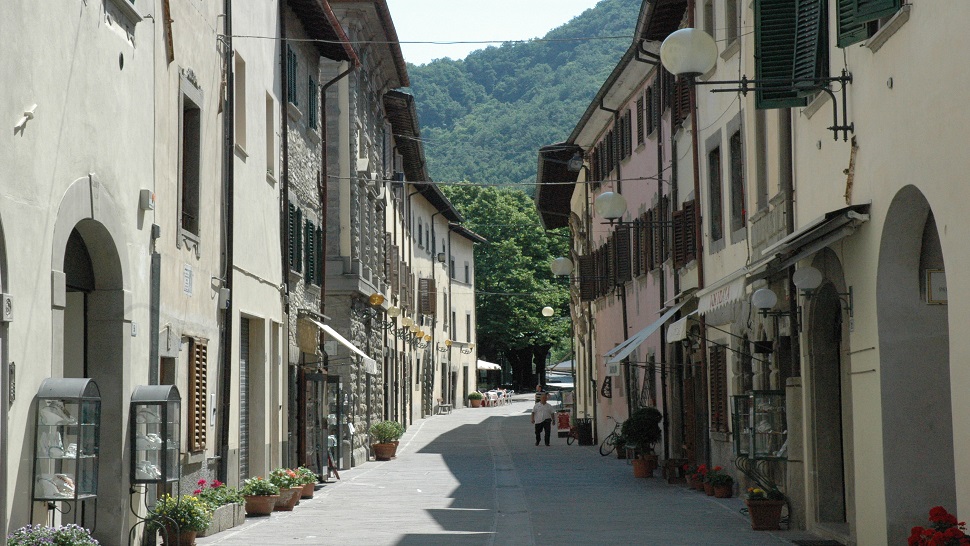PIAZZE, LOGGE, VIE STORICHE
Via Fiorentina a Bagno di Romagna

Via Fiorentina a Bagno di Romagna
It is the main street that crosses the heart of Bagno. It was once enclosed between Porta Fiorentina and Porta Romana: the first was demolished in 1871 to give air to the village, the other in 1888. Palaces with clear Tuscan lines overlook it. Starting from Piazza Ricasoli, the street makes an angle with the elegant Loggetta Lippi dominated by the recently restored Palazzo Dei and until the seventeenth century an integral part of the Camaldolese monastery. Beside, at number 7, there is a house where - as evidenced by the small plaque - on January 20, 1498 the miracle of the "Madonna of the blood" took place. Opposite (number 18) is the eighteenth-century Palazzo Salvetti with noble coats of arms on the entrance architraves, an elegant wrought iron balcony and a plaque that recalls how in 1834 the Grand Duke of Tuscany Leopold II of Habsburg Lorraine was hosted there. In the facade also opens the Vicolo del Voltone which leads to Via Palestro.
Another elegant sixteenth-eighteenth-century building with an exquisitely Tuscan imprint is Palazzo Malvisi, whose facade was redone in 1840: a subtle play on words "Ostium non hostium" (door for friends) is shown on the entrance door. Next to it is the Palazzo del Capitano: the stone coats of arms placed on the facade tell, more than anything else, the long Florentine domination.
The opposite part of the street is entirely occupied by the thermal establishment - known today as "Hotel Terme S. Agnese" - which over the centuries has gradually grown to end up occupying the entire block: in 1910 it was built in Renaissance style , with ashlar base and windows with tympanum, the wing that forms the corner with Via delle Terme, and to which the eighteenth-century "Teatro dei Ravviati" and the Chancellery were incorporated in 1969-1970, while the seventeenth-century Palazzo Grisolini was annexed in most recent date.
It is in the center of the village.












 Facebook
Facebook Instagram
Instagram Youtube
Youtube